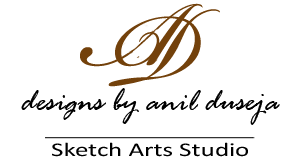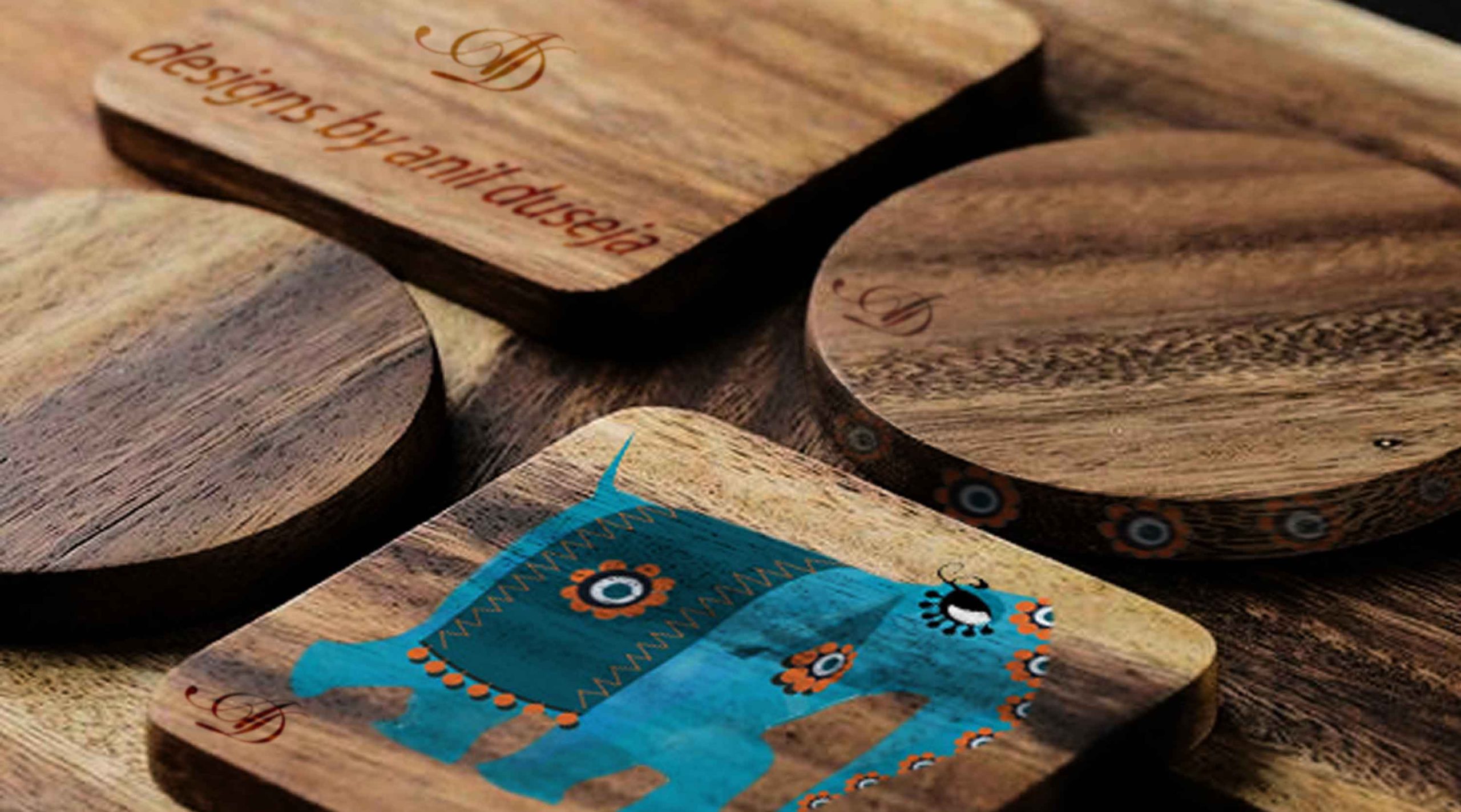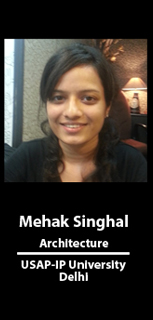Entrance Exam Coaching
Study Abroad
Certificate and Diploma Courses
Our Successful Students
Jamia Millia Islamia
Official website : http://www.colart.delhigovt.nic.in
Bachelor of Architecture (B. Arch.)
No. of Seats: 40
Programme/Course Fee:Rs. 9,450
Minimum requirements for Admission
• A candidate who has passed 10 + 2 Examination and has secured not less than 50% marks in with Mathematics, English, Physics, and Chemistry as subjects shall be eligible for
admission to first year of the B. Arch. Programme,
subject to an aptitude test.
• A 3 – year Diploma (10+3) recognized by Central/
State government provided that the candidate
passed the Diploma with 50% marks in aggregate.
Mode of Admission
The admission to this programme will be made on the
basis of merit determined by an Entrance Test of two
papers of 2 hrs & 3 hrs duration with a weightage of
100 (Physics, Chemistry, Maths) marks & weightage of
100 (Aptitude Test & Drawing) marks. The medium of
Entrance Test will be English.
Preference of Programme
Candidates are required to specify the preference of
programme B. Arch. / B. Arch. (self financing) as I, II
or N (N-No choice).
Time Limit for completing the Programme
The maximum time limit for completing the programme
is 8 years after admission to the programme in the first
year.
B. Arch. Entrance Test
There shall be two papers, the first (PCM) containing
three sections viz. Physics, Chemistry &Maths. The
questions in the first (PCM) test will be objective types
& Aptitude Test will contain subjective (illustrative) as
well as objective questions. The student has to secure at
least 40% marks in both PCM & Aptitude Test separately.
Details of Marks
Papers/ Test Max Marks Duration
PCM 100 2 hrs
a) Aptitude test 50
b) Drawing 50 3 hrs
Total 200 –
NOTE: The medium of test will be English.
SYLLABUS FOR P.C.M.
Physics:
Units and dimensions, SI units, displacement, velocity,
kinematics in one and two dimensions with constant
acceleration, projectiles, concepts of relative motion,
circular motion. Newton’s Laws of motion, concepts of
inertial frame, momentum and energy, universal law of
gravitation, variation of the acceleration due to gravity
with altitude and latitude. Kepler’s Law of motion of
planets and satellites assuming circular orbits, simple
harmonic motion. Centre of mass of a system of particles,
elastic and inelastic collision in one dimension, rigid
bodies, moments of inertia of simple shapes like ring,
disc, cylinder and sphere, angular momentum, torque,
conservation of angular momentum. Hook’s law,
Young’s Modulus shear and bulk moduli, principle of
buoyancy, pressure in a fluid wave motion, concepts of
amplitude, frequency and phase, longitudinal and
transverse waves, progressive and stationary waves,
vibration of string and air columns, resonance, Doppler’s
effect, Thermal expansion of solids, liquids, and gas,
gas laws, absolute temperature, specific heat, Cp, Cv
and isothermal and adiabatic processes, calorimetry,
latent heat, equivalence of heat and work, conduction,
convection and radiation, Elements of Kinetic Theory
of gases, pressure of an ideal gas equipartition of energy,
coulomb’s law, electric field, lines of force, electric
potential. capacitors in series and parallel, energy stored
in a capacitor, electric current, Ohm’s law, Series and
parallel arrangement of resistances and cells, Krichoff’s
Law, Wheatstone bridge and application, heating effect
of current, current carrying wire in a magnetic field,
moving coil, galvanometer and ammeter, Amphere’s law,
Faraday’s Law, Lorentz Force, effect of magnetic field
on current carrying conductors, Maxwell’s equations,
curved mirrors and thin lenses, magnification,
microscope telescope, wave nature of light, interference
phenomenon, Young’s double silt experiment, fringe
width, polarisation of light, cathode rays radioactivity
law of decay, half life, photo-electric effect, Byohr’s
theory of hydrogen like atoms, X-rays production and
properties, diode rectification and triode amplification,
Atomic nucleus, binding energy, nuclear energy by
fission and fusion, element4ary properties of semi
conductors and devices based on them, Michelson
Morley experiment, postulates of special theory of
relativity.
Chemistry:
General Chemistry/ Physical Chemistry: Atomic mass,
extraction of metals, gas laws, ideal gas equation, Kinetic
molecular theory of gases, constituents of the atom,
nuclear model of atom, Bohr’s atomic model
(Mathematical details excluded), Quantum mechanical
model of atom. Aufbau principle, Hund’s Rule. Paul’s
exclusion principle, de Broglie equation, Uncertainty
principle, shapes of obitals, Modern periodic table,
periodic trends in properties, ionization energy, electron
affinity, atomic radii and electronegativity, Chemical
bonds, quantum theory of covalent bonds, hydrogen
bond, hybridization involving s.p. & d orbital, shapes of
molecules, VSEPR Concept, molecular orbital theory,
solid state, X-ray studies of crystals, packing in crystals,
crystal lattices, Internal energy, enthalpy, Hess’s Law,
entropy, free energy, heat of reactions, concept of
chemical equilibrium, Law of Equilibrium, Le Chatelier’s
Principle and its applications, ionisation of electrolytes,
acid base equilibrium, solubility product, ionization of
water, pH, redox reactions, Galvanic cell and its EMF,
electrode potential, effects of temperature and
concentration, electrolysis, Oxidation number, Solutions,
lowering of vapour pressure, Raoult’s Law, chemical
kinetics, rates of reaction, its dependence on
concentration, order of a reaction, factors affecting rate
of a reaction, rate constant, half life period of first order
reaction, absorption, colloidal state, preparation and
properties of colloidal solutions, gold no, radioactivity,
half life, Carbon dating, chemical thermodynamics.
Inorganic Chemistry: Preparation and Properties of the
following : Hydrogen, Oxygen, Halogens, Noble gases,
Water, Hydrogen peroxide, Nitrogen, Boron, Silicon,
Phosphorous, Sulphur, Sodium, Potassium, Magnesium,
Calcium, Aluminium, Iron, Copper, Silver, Gold, Zinc,
Mercury, Tin, Lead, Transition elements, Inner transition
elements, Cement, Glass, Plastics, Soaps, Detergents,
Coordinate compound.
Organic Chemistry: Organic radicals, ions, inductive,
electromeric and resonance effects, isomerism,
Homologous series. General preparation and functional
group properties of the following with emphasis on points
noted against each of them.
(a) Alkanes (free radical substitution) alkenes
(electrophilic addition, Markownikoffs addition,
peroxide effect) and alkynes
(b) Alcohol, distinctions, holoform reaction
(c) Alkyl halides (Nucleophlic substitution)
(d) Carbonyl compounds (Nucleophilic, Addition,
polymerization and condensation)
(e) Ethers and carboxylic acids
(f) Amines (classification, distinction, basic nature)
(g) Benzene (resonance), Toluene, Phenol, glycerol,
Oils and Fats; Proteins, nucleic acids.
Carbohydrates and lipids.
Mathematics:
Set Theory and Higher Algebra –Algebra of sets,
relation, One, Many one, Onto and Into Mappings,
Inverse mapping, Composite mapping, Bounded and
unbounded sets Neighbourhood of a point, domain,
Codomain, Range. Square roots of polynomial quadratic
surds, unity, A.P., H.P., G.P. and other related
miscellaneous series, A.G.P., Method of differences, Sum
of the squares and cubes of sum of the squares and cubes
of first n nature numbers, Simple geometrical problems
of permutations and combinations, General terms in the
expansions of Logarithmic, Exponential series, binomial
and multinomial theorems, remainder theorem, Factor
theorem, rationalising factor of binomial surd of different
orders, Conversion of a fraction and a quadratic surds
into a continued fraction, Inequalities. Periodic function,
hyperbolic function, Inverse hyperbolic functions,
Greatest integer functions, Absolute function, Sisgnum
function, Even and Odd functions, Transcendental
functions, Rational and Irrational algebraic functions etc.
Vector Algebra –Linear combination of vectors, linear
dependence and independence of vectors, Geometrical
applications of dot (scalar) and cross (vector) product
of two, three and four vectors.
Plane and Solid Geometry – Classification of curves
represented by general polynomial equations
(homogeneous and non- homogeneous) of second
degree in x and y, Homogeneous equations of nth degree,
Detailed study of families of Straight lines and Circles,
Parabola, Ellipse and Hyperbola, condition of tangency
of a line to a curve of any positive integral degree in x
and, simple problems on plane, straight line in space
and sphere.
Trigonometry – Trigonometrical conditional identities
and equations, Relations between sides, angles and radii
ofincircle, circum circle and excribed circle associated
with triangle, Inverse circular functions, Polar form of
complex number, Euler’s formula, Values of (a + ib )p/
q , Applications of De-Moivre’s theorem.
Determinants and matrices – Multiplications of
determinants and matrices, adjoint and inverse of
matrices, rank ‘of matrix, Cramer’s rule, Applications
of determinants and matrices, Geometrical
transformations (i.e. reflection, rotation, translation,
enlargement), their composition and representation by
matrices. Limit, Continuity, Monotonocity,
Differentiability, Differentiation of composite function,
Implicit relation, Parametric forms, logarithmic
differentiation, differentiation by transformations,
increasing and decreasing functions, Tangent, Normal,
Maxima and Minima of a function of one variable,
velocity, Acceleration, rolle’s theorem, Lagrange’s mean
value theorem, standard results on successive (ordinary
and partial) differentiation. L ‘Hospital’s rule, Seven
indeterminate forms, Euler’s theorem on homogenous
function for partial differentiation, Simple problems on
Leibnitz’s theorem. Equations of tangent plane and
normal line at any point of 3 D figures.
Integral Calculus – Integration by well known standard
results, by substitutions, by parts, by partial fractions,
some well known definite integrals, properties of definite
integrals, Reduction formulae, Applications of definite
integral in finding the area of bounded region in z- y
plane, Volume and lateral (curved) surface area of some
well known 3-D solids obtained by revolution, Mean
value, Mean square value, root mean square value of a
function for a given interval, Calculation of a interval in
which the value of a given definite integral exists.
Differential Equations – Formation of ordinary and
partial differential equations, General and particular
solution of O.D.E. of I order and I degree (i.e. variable
separable for, homogeneous form, linear form, exact
form and their reducible form obtained by some
transformations and integrating factors), O.D.E. of I
order but not of I degree, General solution of dny/dxn =
G(x), d2y/dx2 = H(y).
Karl Pearson’s simple correlation coefficient for a
tabulated function between two variable Coefficients of
covariance and variation, Lines of Regression, regression
coefficients Properties of binomial, normal and poission
distributions. Measures of skewness and Kurtosis.
SYLLABUS FOR APTITUDE TEST
Reasoning and Awareness (Objective Type)
Current affairs- Science & Technology, Sports &
Entertainment, Place & Buildings, Personalities etc.
Social and Cultural Awareness.
Reasoning- Simple reasoning to select the odd one out
from the set of entities, to find sequence in progression.
Drawing (Illustrative Type)
Free Hand Sketching- Free hand sketching of simple
objects from everyday life such as furniture, kitchenware,
vehicles and natural elements such as flowers, leaves,
plants, trees etc from observation and recall from
memory. Sense of Scale and proportion.
Enlargement & Reduction- Enlargement and reduction
of given figures, understanding of scale and proportion.
Geometrical Drawing- Drawing of basic geometrical
shapes such as lines, angles, triangles, polygons, circles
etc and their compositions.
Abstract Drawing- Exercises to complete an abstract
figure provided into a creative pattern or art based on
visualisation, imagination and creativity.
Sketching of Scene- Sketching of scenes from everyday
urban and rural life commonly observed such as markets,
festival, mela, ghats, playgrounds, railway stations, bus
stops etc; from memory. Ability to draw objects from
imagination with details like colour, texture, materials
etc;
Colouring- Colouring in pencil, water/poster colours or
any other medium for colouring techniques and
composition of colours.
Teaching Timings
Course Days Timings
B. Arch. Monday to Friday 9:00 to 5:30 p.m.
B. Arch. Moday to Friday 2:00 p.m. to 9:00 p.m.
(SFS)
M Arch. &Moday to Thursday 5:40 p.m. to 9:00 p.m.
M. Ekistics Saturday to Sunday 2:30 p.m. to 9:00 p.m
Programmes/Courses
Bachelor of Architecture (B. Arch.) (Self Financing)
No. of Seats: 40
Programme/Course Fee:Rs. 55,650
Drawing (Illustrative Type)
1.Free Hand Sketching– Free hand sketching of simple
objects from everyday life such as furniture, kitchenware,
vehicles and natural elements such as flowers, leaves,
plants, trees etc from observation and recall from
memory. Sense of Scale and proportion.
2.Enlargement& Reduction– Enlargement and reduction
of given figures, understanding of scale and proportion.
3.Geometrical Drawing– Drawing of basic geometrical
shapes such as lines, angles, triangles, polygons, circles
etc and their compositions.
4.Abstract Drawing– Exercises to complete an abstract
figure provided into a creative pattern or art based on
visualisation, imagination and creativity.
5.Sketching of Scene– Sketching of scenes from everyday
urban and rural life commonly observed such as markets,
festival, mela, ghats, playgrounds, railway stations, bus
stops etc; from memory. Ability to draw objects from
imagination with details like colour, texture, materials
etc;
6.Colouring– Colouring in pencil, water/poster colours or
any other medium for colouring techniques and
composition of colours.
Programmes/Courses
B.F.A Applied Art
No. of Seats: 30
Programme/Course Fee: Rs. 8,950
Department of Applied Art
Faculty of Fine Arts, JMI
Syllabus for Entrance Test 2013-14
The Entrance Test of BFA will have three parts
Part I
Graphic Design
Size : ¼ Imperial (Cartridge Sheet)
Medium : Water proof ink / Poster Colour (Black) M.M. 30
Part II
Life Drawing from model
Size : ½ Imperial (Cartridge Sheet)
Medium : Pencil M.M. 30
Part III
Aptitude Test / General Knowledge M.M. 40
Total 100 marks
Material for all the tests : Colours, brushes, pencils 2B, 3B, 4B, 6B water colour, water bowl, counte stick, charcoal stick, drawing board, eraser, water proof black ink, instrument box with set square, scissors for paper cutting, glue stick / gum etc.
Department of Painting
Faculty of Fine Arts
Jamia Millia Islamia
New Delhi — 110025
Syllabi for Entrance Tests B.F.A. Painting Total Marks: 100
Composition
Topic: Day to day life
Medium: Water Colour, Pastel ColourSize: 1/14 imperial sheet
Life drawing
Topic: Model study
Medium: Pencil (2B, 4B, 6B)
Size: ‘A imperial sheet
Aptitude test based on general knowledge
M.M: 30
M.M: 30
M.M:40
Department of Applied Art
Faculty of Fine Arts, JMI
Syllabus for Entrance Test 2013-14
MFA:
Part I
Graphic Design
Size : Full Imperial (Cartridge Sheet)
Medium : Poster colour, Ink or any other medium M.M. 50
Part II
Theory : Based upon Art History M.M. 35
Part III
Interview M.M. 15
Total 100 marks
Material for all the tests : Colours, brushes, pencils 2B, 3B, 4B, 6B water colour, water bowl, counte stick, charcoal stick, drawing board, eraser, water proof black ink, instrument box with set square, scissors for paper cutting, glue stick / gum etc.
Programmes/Courses
B.F.A Art Education
No. of Seats: 20
Programme/Course Fee: Rs. 8,950
Programmes/Courses
B.F.A Painting
No. of Seats: 20
Programme/Course Fee: Rs. 8,950
Programmes/Courses
B.F.A Sculpture
No. of Seats: 10
Programme/Course Fee: Rs. 8,950
Programmes/Courses
M.F.A Applied Art
No. of Seats: 8
Programme/Course Fee: Rs. 8,950
Programmes/Courses
M.F.A Art Education
No. of Seats: 8
Programme/Course Fee: Rs. 8,950
Programmes/Courses
M.F.A Art History & Art Appreciation
No. of Seats: 10
Programme/Course Fee: Rs. 8,950
Programmes/Courses
M.F.A Graphic Art
No. of Seats: 8
Programme/Course Fee: Rs. 8,950
Programmes/Courses
M.F.A Painting
No. of Seats: 8
Programme/Course Fee: Rs. 8,950
Programmes/Courses
M.F.A Sculpture
No. of Seats: 8
Programme/Course Fee: Rs. 8,950


 Entrance Exam Coaching for all Art• Design and Architecture Colleges like NIFT • NID • DCA (Delhi College of Arts) • JMI (Jamia milia Islamia)• NATA • JEE B.Arch • SPA• IIT-CEED • CEPT • PEARL • FDDI • Srishti • Symbiosis etc with Portfolio Making
Entrance Exam Coaching for all Art• Design and Architecture Colleges like NIFT • NID • DCA (Delhi College of Arts) • JMI (Jamia milia Islamia)• NATA • JEE B.Arch • SPA• IIT-CEED • CEPT • PEARL • FDDI • Srishti • Symbiosis etc with Portfolio Making We Specialize in Professional Sketching and Designing portfolio to study abroad in any country for any creative course like Fine Art • Animation• Gaming • Fashion Design • Architecture • Interior Design • Product Design • Accessory Design • Car Design • Graphic Design etc.
We Specialize in Professional Sketching and Designing portfolio to study abroad in any country for any creative course like Fine Art • Animation• Gaming • Fashion Design • Architecture • Interior Design • Product Design • Accessory Design • Car Design • Graphic Design etc.












 Our work quality and techniques meet International Standards to provide you 1 Month to 3 Months Certificate Courses and 6 months to 3 years Diploma Courses (Sketching, Designing and Coloring) in various fields like Skecthing • Coloring • Painting • Fine Art • Animation • Gaming • Fashion Design • Architecture • Interior Design • Product Design • Accessory Design • Car Design • Graphic Design • Product Art • T-Shirt Design etc with portfolio Making.
Our work quality and techniques meet International Standards to provide you 1 Month to 3 Months Certificate Courses and 6 months to 3 years Diploma Courses (Sketching, Designing and Coloring) in various fields like Skecthing • Coloring • Painting • Fine Art • Animation • Gaming • Fashion Design • Architecture • Interior Design • Product Design • Accessory Design • Car Design • Graphic Design • Product Art • T-Shirt Design etc with portfolio Making.
 and much more..
and much more..









